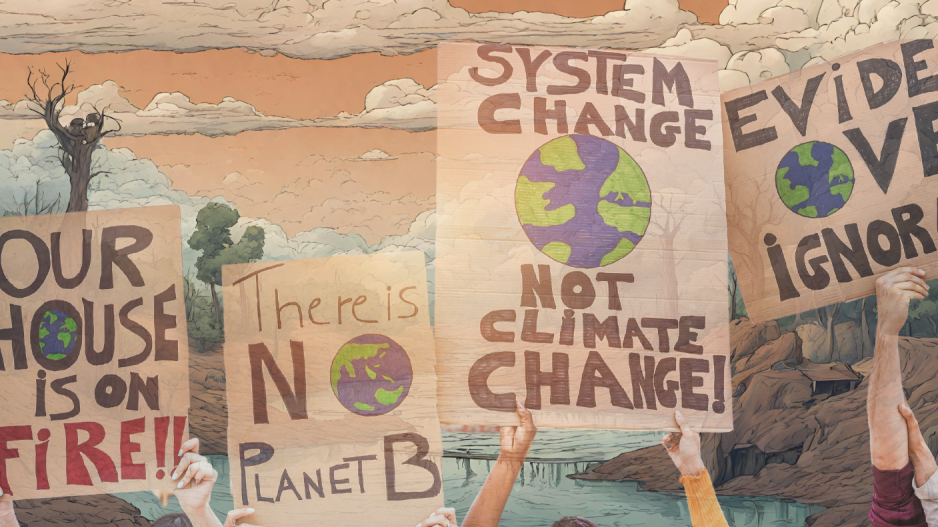The Narrowing Window for a Successful Response to Climate Change
"This May Be Our Last Chance to Raise Our Ambition to Take the Necessary Additional Measures Before It Is Too Late to Reverse the Devastating Effects of Climate Change"
Climate change refers to the long-term change in temperature and its variation from typical weather patterns. Although the Earth's climate has been changing throughout its history, since the industrial revolution and beyond, human activities, mainly due to the burning of fossil fuels such as coal, oil and gas, have accelerated the emission of greenhouse gases, resulting the climate change. Greenhouse gases are atmospheric gases that absorb or "trap" the sun's infrared radiation in the atmosphere, leading to global warming. This process is vital for the survival of life on earth. Without the greenhouse effect, the average temperature on Earth would be -18°C. However, human activities, such as burning fossil fuels for transport or heating, destroying forests and livestock farming, increase the concentrations of greenhouse gases in the atmosphere, contributing to climate change.
As a result, we are facing a global warming caused by anthropogenic activities and a climate crisis occurring simultaneously in different regions of the world. Climate change is a global and multi-sectoral challenge associated with catastrophic weather events, severe droughts, water scarcity, severe fires, sea level rise, floods, ice melt, catastrophic storms and biodiversity loss. To understand its impact, we only need to look at the temperatures recorded over the last decade (2011-2020), which are presented as the warmest on record, with each of the last four decades being warmer than any previous decade since 1850. The average surface temperature of the Earth is now about 1.1°C warmer than it was in the late 1800s. In 2023, September was the warmest month on record with the global average temperature 1.8°C above pre-industrial levels. If we do not maintain stable temperature levels, then the consequences of climate change will become progressively worse and irreversible.
For the Eastern Mediterranean region, research by the Cyprus Institute has shown that it is warming faster than the planetary average and other inhabited areas of the planet. There is a trend towards drier conditions and a further increase in temperature and decrease in precipitation is expected in the future.
In the international arena, intensive initiatives and processes to address climate change have been taking place over the years, with a series of Conventions, Protocols and Commitment Agreements for a common global effort and solution. The Conference of the Parties (COP) on Climate Change is perhaps the most enduring example, which is held every year. World leaders meet to review the progress made by countries around the world and assess the needs to combat climate change. That's why, at COP21 in 2015, leaders committed to a long-term goal to substantially reduce global greenhouse gas emissions, known as the Paris Agreement. Recognising that this would significantly reduce the risks and impacts of climate change, it was agreed that we must hold global temperature increase to well below 2°C above pre-industrial levels and continue efforts to limit it to 1.5°C above pre-industrial levels.
At the European level in December 2019, EU leaders agreed at the European Council that the EU should achieve climate neutrality by 2050. In December 2020, EU leaders took another step towards climate neutrality. As an intermediate step towards the 2050 target, they agreed to reduce EU greenhouse gas emissions by less than half (compared to 1990 levels) by 2030. By 2030, EU emissions should be reduced by at least 55 %. The new target was a significant step up from the previous EU target of a 40 % reduction in 2030 agreed in 2014.
Are we on the right track? Monitoring and reporting on greenhouse gas emissions show that we are not doing enough. In fact, if we continue with current policies, it will be impossible to limit the temperature increase to 1.5°C. Investments in fossil fuel extraction and use, which account for about two-thirds of today's greenhouse gas emissions, continue in most regions of the world. And governments still plan to more than double the amount of fossil fuel production in 2030. The United Nations Environment Programme (UNEP) Emissions Gap Report for the year 2023 states that if current policies continue, global warming is estimated to be limited to 3°C throughout the century. Meeting all commitments by 2030 reduces this estimate to 2.5°C, while additional meeting of all net-zero emissions commitments would reduce it to 2°C.
The UN Intergovernmental Panel on Climate Change says that exceeding the 1.5°C limit risks causing much more severe climate change impacts. This implies a huge responsibility for the Group of 20 major contributors to greenhouse gas emissions (Argentina, Australia, Brazil, Canada, China, China, France, Germany, India, Indonesia, Italy, Japan, Japan, Republic of Korea, Mexico, Russia, Saudi Arabia, South Africa, South Africa, Turkey, the United Kingdom, the United States and the European Union), which account for 76% of global emissions.
This year's COP28 Climate Change Conference, which started on Thursday 30 November and ends on 12 December, is very important because it will conclude the first global assessment of progress towards the Paris Agreement's goal of limiting temperature increase to 1.5°C. This may be our last chance to raise our ambition to take the necessary additional measures before it is too late to reverse the devastating effects of climate change.
-
by Eva Psalti, Environmental Scientist, KyklOIKOdromio, [email protected]






